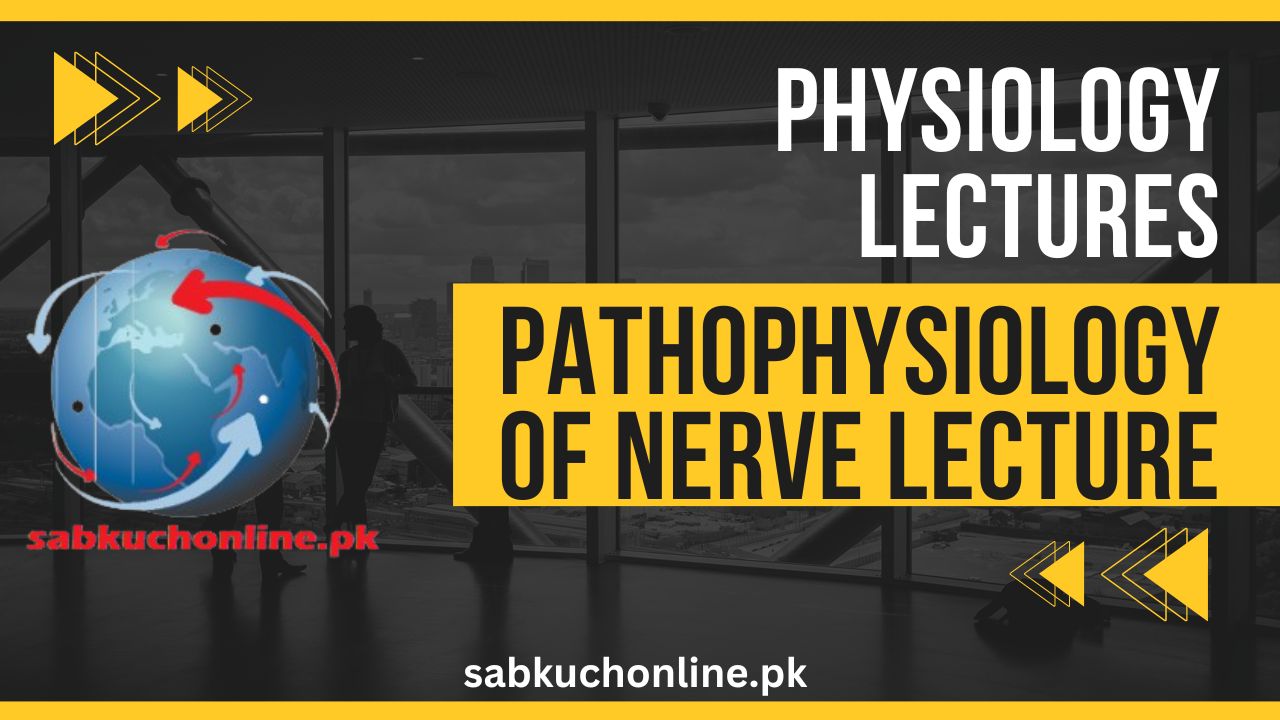Objectives
By the end of the lecture, students should be able to:
•Explain the effects of cutting a mixed nerve.
•Describe the process of degeneration and regeneration of nerve.
•Explain the pathophysiology and symptoms of Multiple Sclerosis (MS).
EFFECTS OF CUTTING A MIXED NERVE:

What happens when you cut a mixed nerve?

1.LOSS OF MOTOR ACTIVITY: (All the changes listed below are observed in muscles with the affected motor nerve.)
•Muscle becomes paralyzed.
•Muscle becomes flaccid (NO TONE).
•Muscle shows rapid loss of mass (WASTING).
•Muscle starts showing the ERB’S REACTION OF DEGENERATION(altered response of the muscles to electrical stimulation seen after loss of motor supply)
2.LOSS OF SENSATIONS:
•Loss of sensation in the area supplied by the affected sensory nerves.
- LOSS OF AUTONOMIC NERVE ACTIVITY:
•Area becomes blue & cold.
•Activity of the sweat glands is lost.
4.LOSS OF TROPHIC ACTION: (growth-promoting action)
•Atrophy (loss of mass & wasting) of the muscles that were supplied by the motor nerves.
Degeneration is the loss of functional activity and trophic action in an injured/ damaged neuron.
The loss of one neuron from a pathway can have drastic consequences for the entire pathway!!
DEGENERATION & REGENERATION OF NERVE FIBRES
How can the nerve fibers be damaged?
Nerve fibers may be damaged by being severed or crushed (as during a traumatic event, such as a vehicle wreck, a gunshot wound, or a diving accident) or by being deprived of their blood supply (as during a stroke).
What happens when the nerve fiber is damaged?
When damaged, the affected axon is unable to conduct action potentials.
If the cell body dies when a neuron is injured, the entire neuron dies. If the cell body is intact and only the axon is severed, most of the neuron survives.

DEGENERATION:
When a nerve fibre is cut or severely crushed, degenerative changes take place at 3levels:
1.NERVE CELL BODY
2.Central/ Proximal stump: It is called RETROGRADE DEGENERATION:.
3.Distal stump: It is called WALLERIAN DEGENERATION(also called Secondary Degeneration)

Changes in the nerve cell body:
Cell body swells.
•Nisslgranules undergo dissolution. (CHROMATOLYSIS)
•Nucleus is pushed to one side.
•Mitochondria, Golgi apparatus, ribosomes & lysosomes show structural changes.
•If the axon is cut quiet close to the cell body, the neuron may die….
RETROGRADE DEGENERATION
Retrograde Degeneration is the degeneration that occurs in the central or proximal segmentof an injured neuron.
•Degenerated area may extend upwards for one or more nodes.
•The degenerating area swells assubstances carried into the axon by axonal transport accumulate.
•Chemical factors produced by Schwann cells near the injury site move by retrograde transport to the cell body, carrying the information that injury has occurred.
•Degeneration my be followed by regeneration (if this part is still attached to the cell body).
•If the area of degeneration is extensive or very close to the cell body, the cell may die.

Wallerian Degeneration?
Wallerian degeneration is an active process of degeneration that results when a nerve fiber is cut or crushed and the part of the axon distal to the injury (i.e. farther from the neuron’s cell body) degenerates.


REGENERATION:
Regeneration of injured nerve fibres refers to the regrowth orrepairof nervous tissues, cells or cell products.
It will take place in 2 cases:
1.If the injury was slight and/ or away from the cell body.
2.If the injured nerve fibre was part of the PNS.Cut axons in the peripheral nervous system (PNS) can regenerate, whereas those in the central nervous system (CNS) cannot.
WHAT HAPPENS:
•The nisslgranules reappear & the nucleus resumes its central position.
•Full recovery may take up to 3-6 months (myelination takes up to 1 year to complete).
•The endoneuraltube is formed by the Schwann cells themselves. This tube guides the regenerating nerve fibre to its proper destination.
•At the beginning of the process, axon in the central end of the cut nerve fibres elongate & give rise to large no. of fibrils that enter into the endo-neural tube.

NO REGENERATION IN CNS:
•Regeneration DOES NOT take place in optic nerve and in the CNS due to the following reasons:
1.The endoneural tubes are absent in the CNS as there are noSchwann cells present; so the regenerating axons cannot be guided.
2.The oligodendrocytes cannot aid in regeneration as they secrete growth inhibiting factors instead of the growth promoting factors (unlike the Schwann cells).
3.The activity of the astrocytes results in the formation of scar tissue.
Multiple Sclerosis (MS) is an auto-immune disease in which nerve fibers in various locations throughout the nervous system lose their myelin. This leads to disruption of nerve impulse conduction.
MULTIPLE SCLEROSISGOING, GOING, GONE…..
Multiple Sclerosis:
Cause:
Exact cause is still unknown. It is suspected that a foreign agent such as a virus alters the immune system so that the antibodies of the immune system mistakenly attack and destroy Schwann cells, thus also destroying the myelin sheath. The destroyed part is replaced with scar tissue. When myelin sheath is destroyed, the nerve impulses travelling along the nerve fibers slows down. When more and more nerves are affected, the person experiences interference with functions that are controlled by the nervous system such as speech, memory, vision, walking etc.
Signs & symptoms:
Patchy destruction of myelin in the CNS→ slow & abnormal conduction of the nerve impulses in the neurons
↓
1.Visual disturbances
2.Tingling & numbness
3.Muscle weakness & Fatigue
4.Gradual paralysis
5.Bladder & bowel problems

Myelin destruction in MS



DIAGNOSIS & TREATMENT
DIAGNOSIS
Physicians take detailed history and performs complete physical and neurological examination.
•MRI
•Nerve Conduction Studies
•Cerebrospinal fluid exam (spinal tap, lumbar puncture)
TREATMENT
•Debilitating disease but not fatal. The quality of life is affected…. Death may occur when the paralysis reaches the respiratory muscles and the person cannot breathe.
•No treatment as yet.
•Only symptomatic treatment.
1.Immunosuppressive therapy: as autoimmune disease so you try to suppress the immune system to prevent further damage.
2.Corticosteroids
3.Alternative therapy: as homeopathy, ayurvedic treatment etc.
